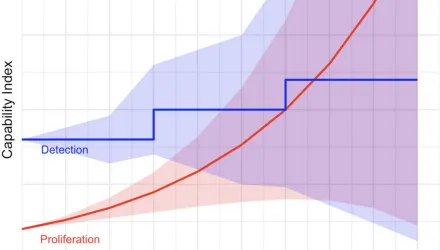Abstract
This article examines whether the quantitative literature on the causes of nuclear proliferation successfully identifies variables that explain existing patterns of proliferation or improve our ability to predict proliferation. Using extreme bounds analysis, cross-validation, and random forests, I examine 31 variables that the extant literature considers significant determinants of proliferation. While some variables perform better than others, most fail to offer strong explanations for existing patterns of proliferation. Even fewer improve our ability to predict proliferation. It follows that the existing quantitative literature on proliferation produces more tentative findings than scholars typically understand.
Continue reading (log in may be required): http://isq.oxfordjournals.org/content/early/2015/12/14/isq.sqv007
Read the International Studies Quarterly symposium on this article here: http://www.isanet.org/Publications/ISQ/Posts/ID/5003/categoryId/102/What-Drives-Nuclear-Proliferation
Bell, Mark S. “Examining Explanations for Nuclear Proliferation.” International Studies Quarterly, Forthcoming 2016





